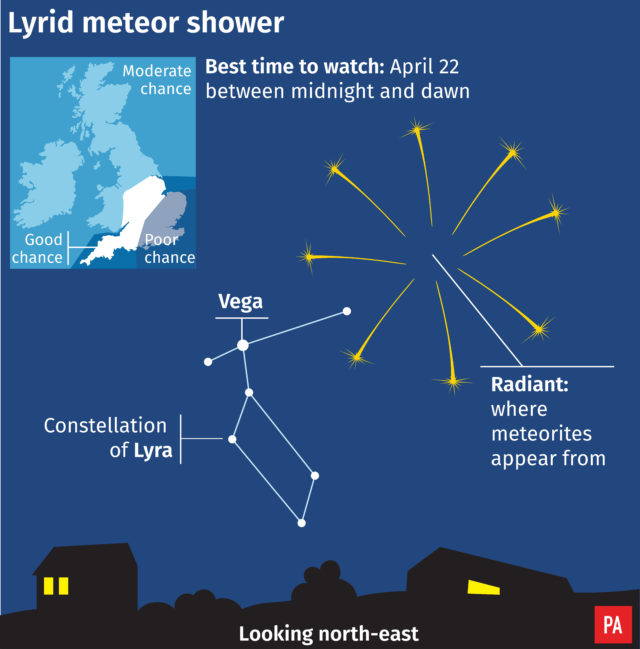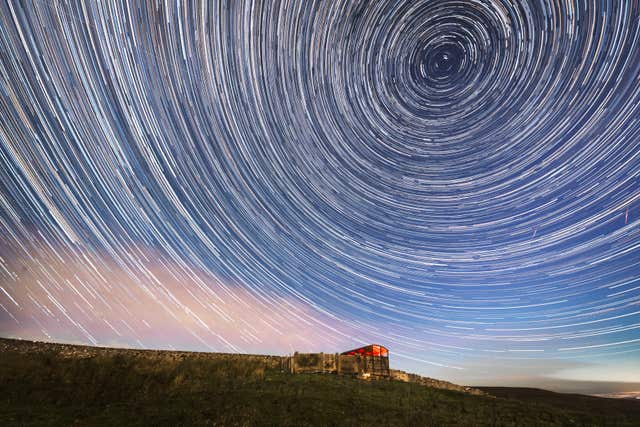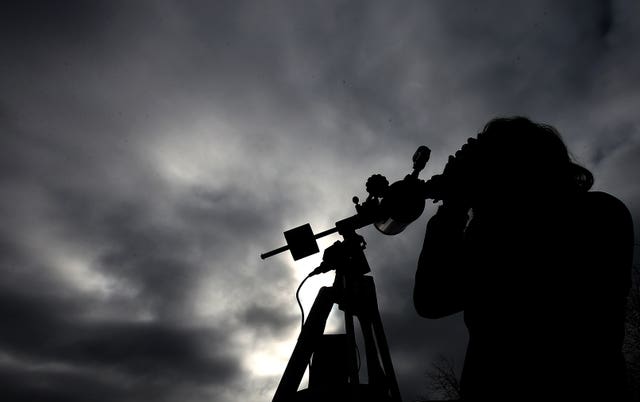
The annual Lyrid meteor show will peak across the UK sky on Thursday night and into Friday morning in a welcome trat for stargazers.
Shooting stars flying across the midnight sky can be a mesmerising sight and now is your chance to catch a glimpse.
Here is all you need to know about the celestial event that will bring an end to the meteor shower drought which started on the second night of 2022.
What is the Lyrid meteor shower?
The shower takes place around this time every year, and although it is not the most impressive, it is typically reliable.
It is named after the Lyra constellation – the star which it appears to come from.
The meteors, which appear as shooting stars, are actually pieces of debris which fall from the Thatcher Comet. It is expected to return in 2276, after a 415-year orbital period.
What time will I be able to see the Lyrid meteor shower?

This year’s shower begun on 14 April, and will continue until 30 April.
The peak days will be the nights of 22 and 23 April.
How can I spot the Lyrid meteor shower?
Viewers are advised to find an open space where there are no trees or high buildings, “particularly towards the east,” said Mr Brown.
Then just lie on the ground, look across the sky, and wait.
“Looking almost east you can find the radial point (where the meteors will appear to come from) in the constellation of Hercules and near the bright star Vega in the constellation of Lyra,” said Mr Brown.
“These will be about 45 degrees above the horizon at midnight, lower earlier on in the night.”
Mr Massey discouraged using a telescope or binoculars as they will restrict the amount of sky that can be seen.
What can I expect to see?
 Stargazers can expect to see around 10 meteors an hour (Danny Lawson/PA)
Stargazers can expect to see around 10 meteors an hour (Danny Lawson/PA)
Some 15 to 20 meteors will be produced per hour, but only about 10 of those will be visible to the eye, due to a restricted view of the sky and light pollution in large cities.
Because the Moon is in its crescent phase, it shouldn’t drown out the shower too much.
How long does the Lyrid meteor shower last for?
 Experts advise against using a telescope or binoculars to view the event (Andrew Milligan/PA)
Experts advise against using a telescope or binoculars to view the event (Andrew Milligan/PA)
This year’s meteor shower began on Monday April 14, and will end around Wednesday April 30.



Comments: Our rules
We want our comments to be a lively and valuable part of our community - a place where readers can debate and engage with the most important local issues. The ability to comment on our stories is a privilege, not a right, however, and that privilege may be withdrawn if it is abused or misused.
Please report any comments that break our rules.
Read the rules here